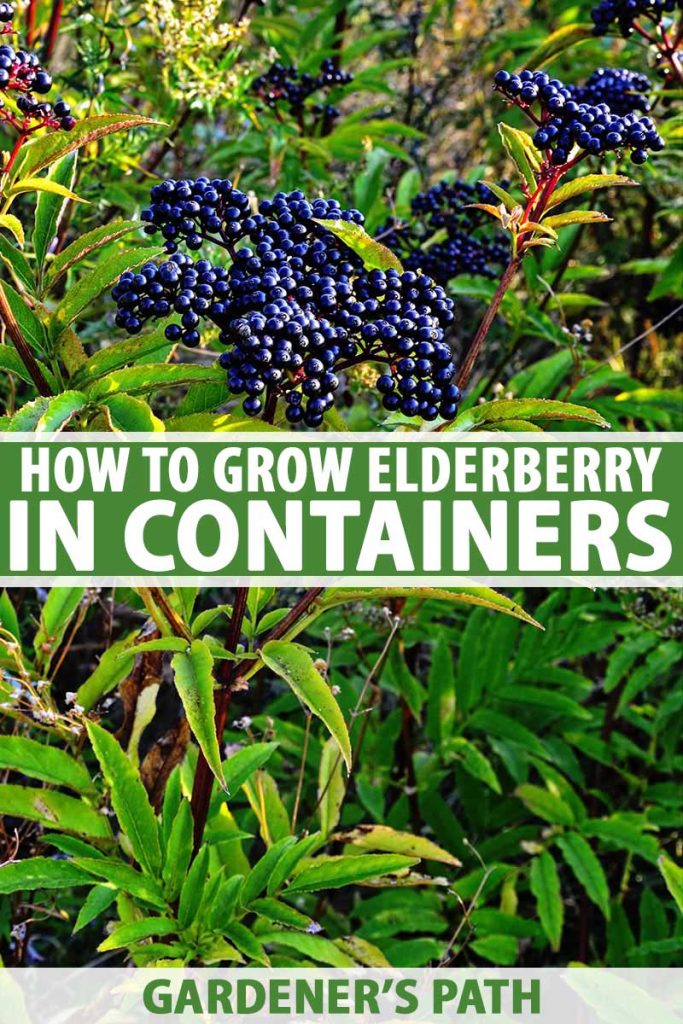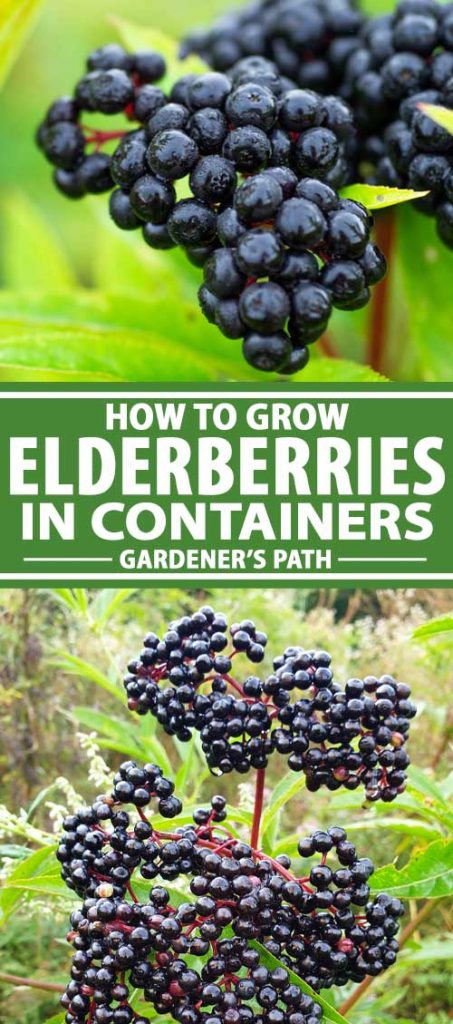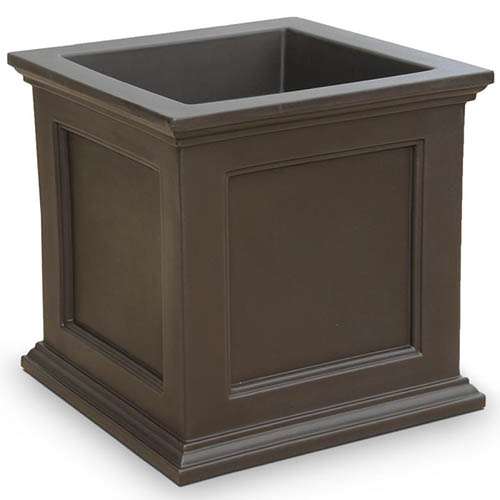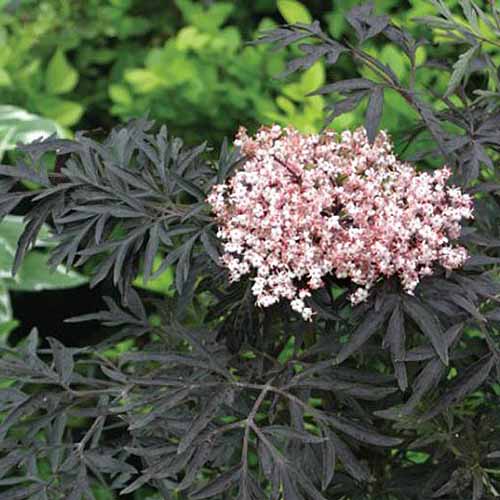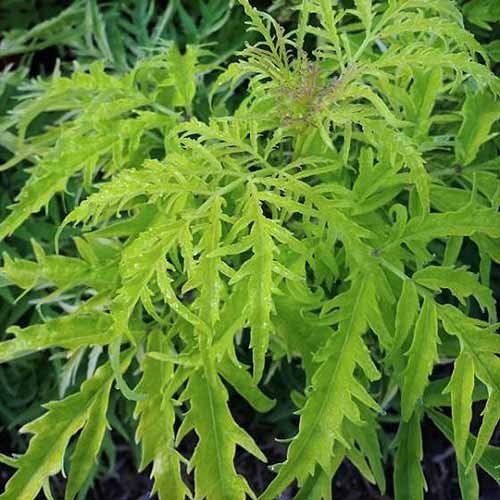The one difficulty further marvelous than having fulfilling with a homegrown harvest of berries picked at their peak ripeness is when these berries are of a spread that’s troublesome to look out all through the retailer.
That’s why I really like rising currants, gooseberries, and my all-time favourite: elderberries.
It isn’t merely the fact that they sort scrumptious, nonetheless there’s one issue so satisfying about rising a plant that well-liked customized has not too method again rediscovered, to the intention of obsession.
Nonetheless what for people who don’t have room in your yard for an elderberry bush? By no means concern, these gorgeous vegetation lend themselves appropriately to container rising, so long as you retain loads of concepts in concepts.
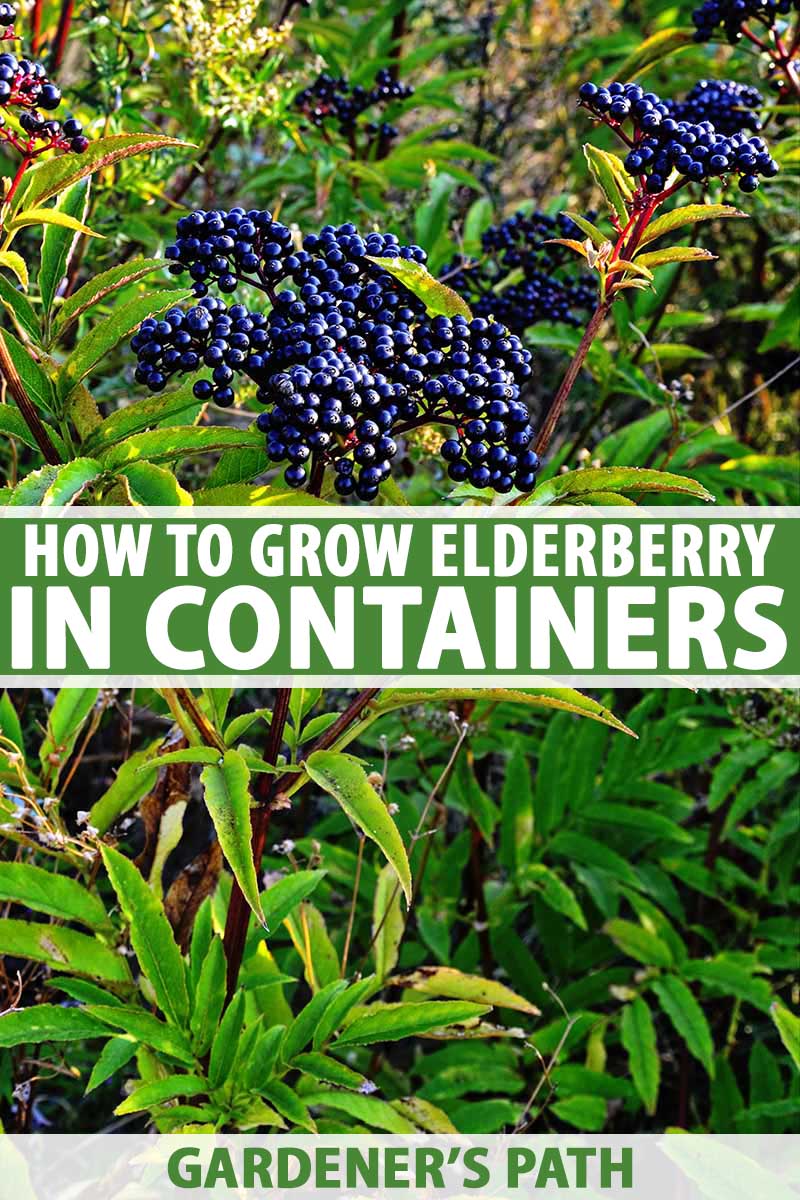

We hyperlink to distributors which will aid you uncover related merchandise. Inside the event you purchase from one among our hyperlinks, we’d earn a cost.
Earlier the tasty berries, that are scrumptious cooked into jam or pie filling, or made into wine, the flowers are furthermore edible and odor good, which makes this a sexy plant to have spherical all through the yard or on the patio.
Inquisitive about among the best methods to get began rising your elderberry in a container? Let’s dive in!
Why Develop Elderberries in a Container?
First, let’s ponder why you would possibly need to develop elderberries all through the primary place.
These shrubs aren’t as frequent in dwelling gardens as various of the extra well-liked edible berries, and I actually really feel that’s a disgrace.
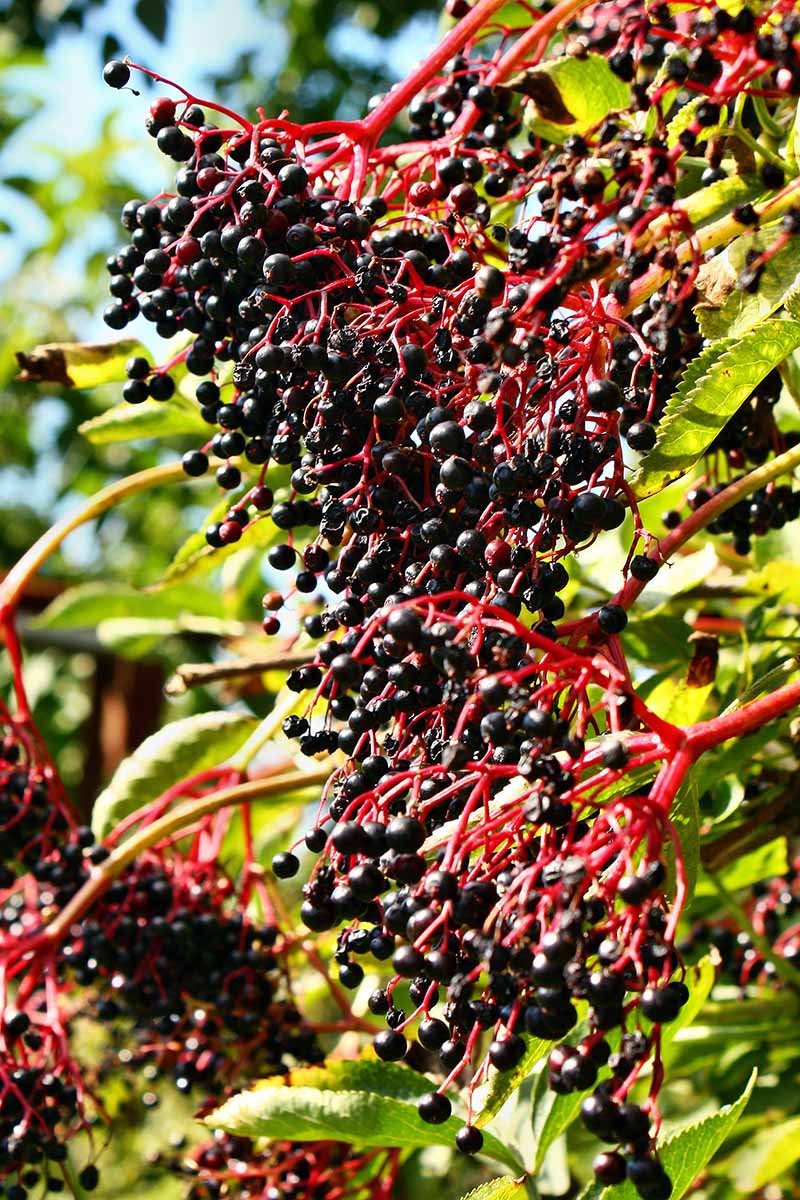

They’re the last word phrase multipurpose plant, offering multi-season curiosity all through the yard with their feathery foliage, clusters of white or pink flowers, and berries in shades of purple, purple, or blue which is able to typically be used medicinally or all through the kitchen.
Even for people who don’t plan to prepare dinner the berries or make your personal dwelling treatments, elderberry shrubs make a stunning decorative addition to outdoor areas, each spacious and extra compact.
The flowers may be snipped and positioned in vases to wash up your property, and a few varieties could also be utilized to model cordial, tea, or wine.
The berries are scrumptious when utilized in baking or made into jam – nonetheless shouldn’t be eaten uncooked, on account of the seeds are poisonous and will set off digestive elements.
Why develop them in containers? Although elderberries have shallow roots, these shrubs are quick growers that unfold by the use of suckers, so planting them in pots is an outstanding method to hold them in test.
Nonetheless my favourite motive to plant these fruit bushes in a container is due to their flowers.
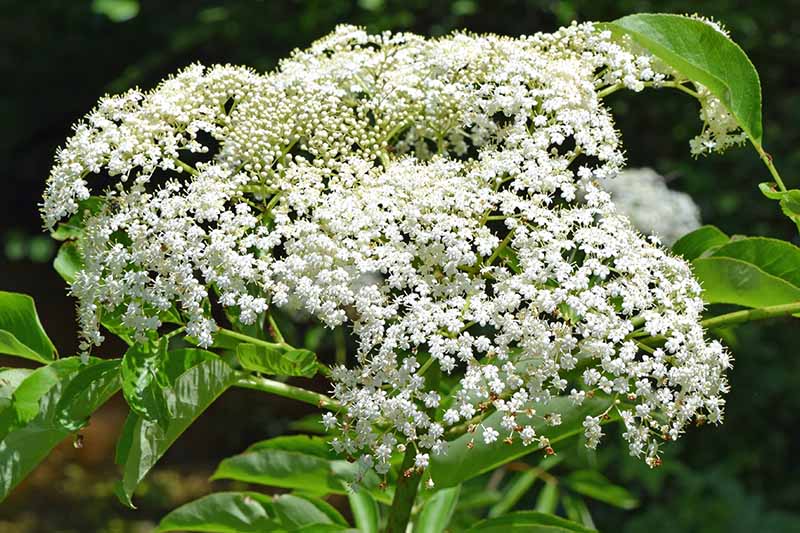

The blossoms odor heavenly – like a handful of summer time season. They’ve a floral, creamy, honey-like scent which is able to fill an home, and entice loads of helpful bugs to the yard.
I need to carry that scent shut so I can have the benefit of it steadily, appropriate on my patio.
Elderberry was as quickly as labeled as a part of the Caprifoliaceae, or honeysuckle household – in all probability on account of the flowers odor so good.
That that they had been reclassified in 1994 as a part of the Adoxaceae household, which accommodates viburnums.
Relying on the variability, these vegetation thrive in USDA Hardiness Zones 3-9. The Mexican or blue elderberry is suitable for growers in Zones 6-10.
Deciding on the Right Container
Elderberry vegetation need a reasonably sizable container to thrive. For greatest outcomes, it is advisable choose one which’s a minimal of 24 inches huge and 20 inches deep.
This plant has shallow roots, so it’s further essential that your container be huge than deep.
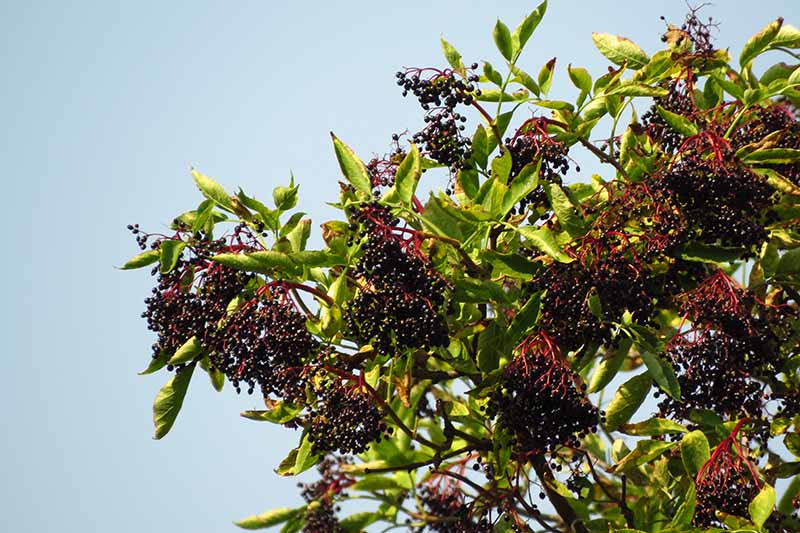

An enormous container permits the roots to develop and unfold out with a view to assist and feed the plant. Permitting the roots to unfold furthermore offers a further common base, and would possibly assist to stop the plant from falling over.
Most varieties have a free-form, bushy progress habits, and will typically develop to be as huge as they’re tall.
Ensure that the pot you select doesn’t taper in path of a slim base.
A heavy-duty, huge base is required on account of the plant tends to get top-heavy, significantly if it’s not saved appropriately pruned.
Coupled with the shallow root system, if the planter shouldn’t be sufficiently big, your container-grown elderberry can merely tip over – notably in windy areas.
All the time test the anticipated mature excessive and unfold of the variability you intend to plant, and select the size of your container accordingly.
That stated, greater is bigger. An enormous container with a heavy base will keep your plant common on account of it matures.
A heavy-duty planter, like one made out of cement or rock, is an outstanding option to stop tipping. Chances are high you will be taught further relating to the execs and cons of totally completely totally different container offers correct proper right here.
This huge, sq. planter could also be supreme. It’s 28 inches by 28 inches and is in the marketplace from Dwelling Depot in black, espresso, and white.
Sq. 28″ by 28″ Planter in Espresso
Giant containers are usually not helpful for vegetation with a small root constructing, nonetheless elderberry likes moist soil with good drainage.
Soil dries out far more shortly in containers, and an infinite pot can protect further moisture with out leaving the roots standing in water, which might set off root rot.
It is a plant that likes to unfold out and it gained’t do appropriately in a small pot. Whereas the roots are shallow, they’ll unfold loads of toes.
Even with an infinite container, your plant will most definitely by no means get as massive because it’d if it had been rising all through the flooring, and this will likely additionally have an effect on your potential harvest.
A full-grown, mature plant can yield as so much as 15 kilos of fruit every season, nonetheless you’ll get lower than that with a container-grown elderberry shrub.
Due to the container need to be so massive, I desire to place mine on a wheeled base. That methodology, if photograph voltaic circumstances change or we’ve a extremely harsh winter, I can change my plant spherical.
Notion me, you don’t need to attempt lifting a container of this dimension that’s full of soil.
Getting ready Your Container
First factors first:
In case your container doesn’t have loads of massive drainage holes, you’ll have to make some.
This plant need to be planted in well-draining soil, on account of standing water can result in root rot. Goal for not less than 5 holes in a 24-inch-wide container.
Chances are high you will drill holes all through the bottom of your container utilizing a family drill, with a drill bit made for dealing with plastic or stone, relying on the fabric of your container.
Don’t put rocks or completely totally different drainage provides all through the underside of the container. You need the soil to retain a superb quantity of water, and the holes you’ve added all through the underside will do the job of draining further water.
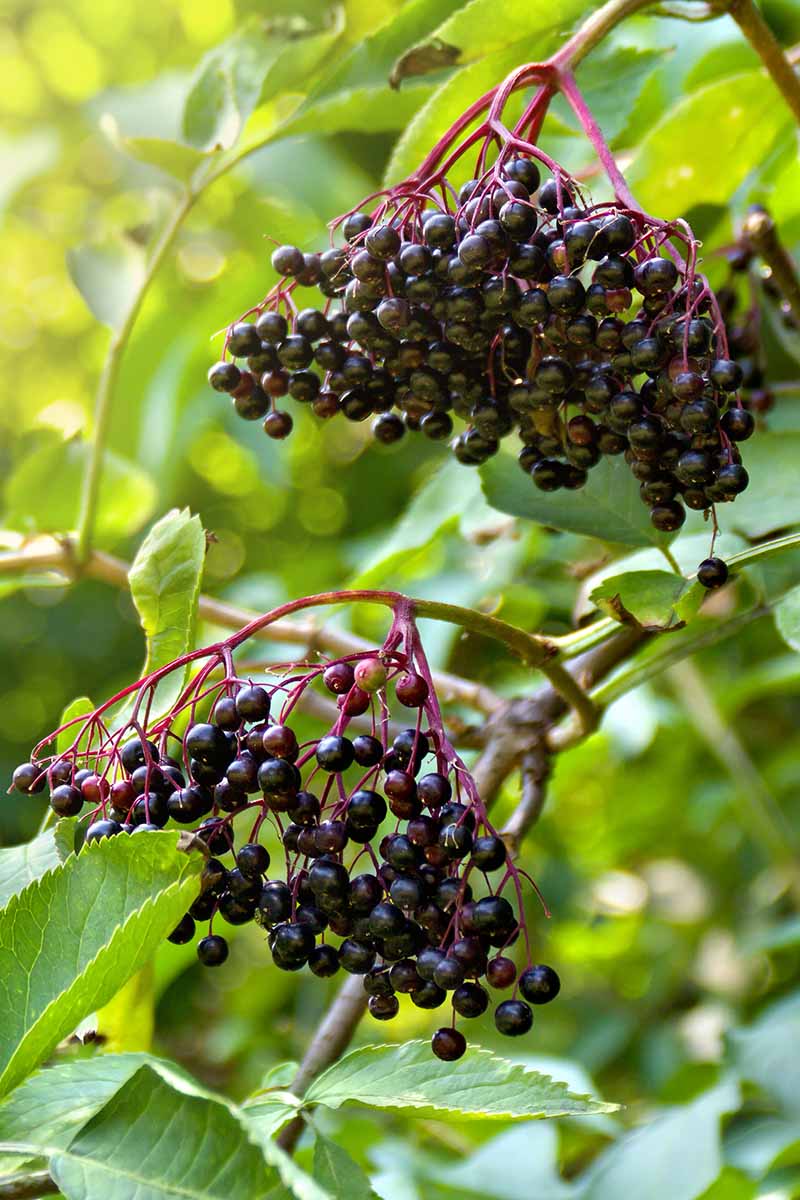

In response to Linda Chalker-Scott, Extension Horticulturist and Affiliate Professor on the Puyallup Analysis and Analysis Coronary coronary heart at Washington State Faculty, rocks or completely totally different coarse provides positioned all through the underside will really impede the circulation of water by the use of the container, probably inflicting the soil to develop to be waterlogged.
Fill your chosen container with an organically wealthy potting soil. Select a potting combine that has added perlite, vermiculite, sand, or peat moss to assist with drainage.
Alternatively, you would possibly as correctly mix 70 p.c perlite and 30 p.c peat moss, and add this combination to your potting soil. Use a ratio of 1 half perlite and peat moss combination to three components potting soil.
Utilizing soil taken straight out of your yard shouldn’t be helpful, as it’d in all probability harbor illness and weed seeds.
Nonetheless for people who do resolve to take movement, conduct a soil take a look at and amend with compost or well-rotted manure as wished. Furthermore add the perlite and peat moss combination talked about above, or some sand to advertise good drainage.
Tips on how one can Develop
Deciding on the fitting location will make your complete distinction in retaining your container vegetation blissful.
The US native species, Sambucus canadensis, thrives in shade or half shade, with about 4 hours of photograph voltaic per day being supreme.
Most completely totally different elderberry species choose a full to half photograph voltaic location, and would possibly fruit bigger in full photograph voltaic. Goal for six hours or further of direct daylight per day.
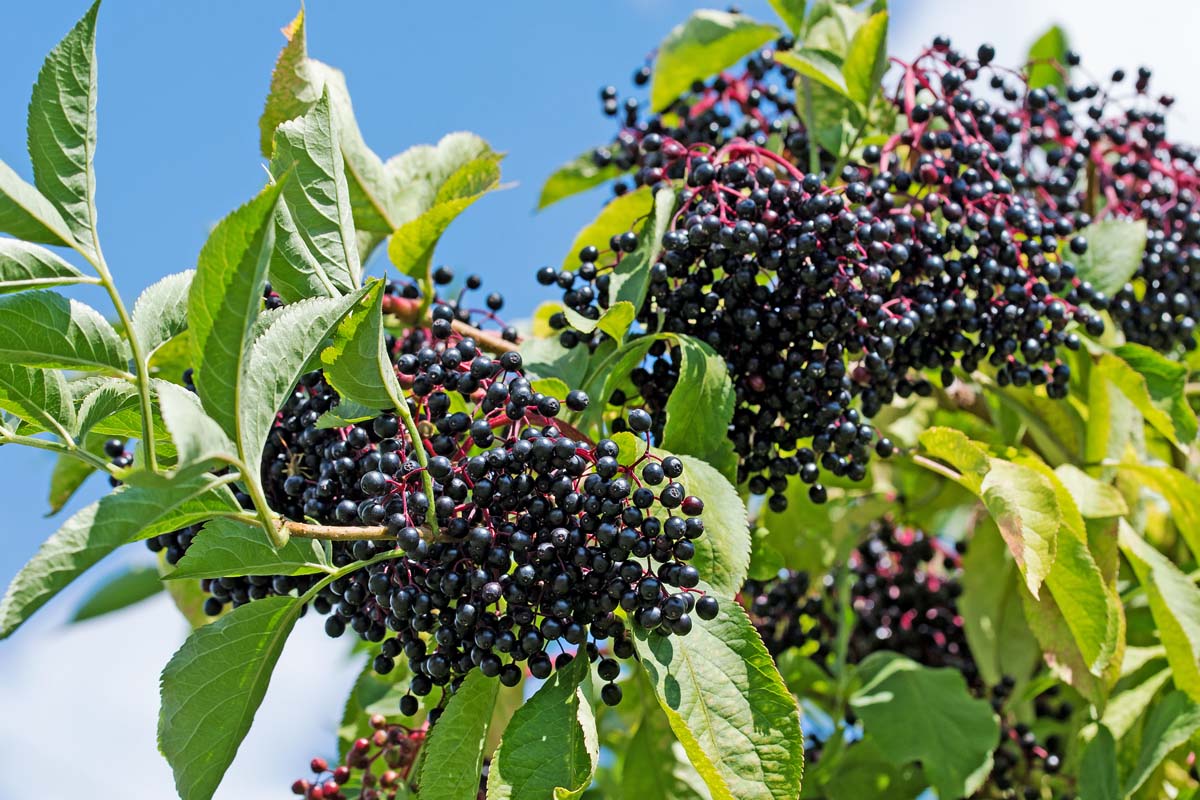

Take into account when deciding on a spot that ripe elderberries are terribly pigmented and could also be utilized to dye supplies, which suggests they could stain your cement walkways and patio flagstones. You’ll every want to reap or prune the berries as they ripen, or be diligent about choosing them up.
Furthermore, understand that birds would possibly choose up and drop berries in areas the place you don’t need them.
Elderberry containers need to be spaced a minimal of three toes aside and away from partitions and fences, to advertise good airflow and assist to stop illness.
Most – nonetheless not all – varieties are self-pollinating, nonetheless you would possibly plant two collectively inside 50 toes of one another to spice up your berry harvest.
You furthermore need to place your vegetation in an home the place they’re protected in opposition to wind to stop your container from tipping over. That is significantly essential for people who plant a a lot greater alternative that may develop to be top-heavy.
Beginning elderberries from seed is a time-consuming course of, nonetheless you can purchase seedlings or naked root vegetation from yard companies and nurseries.
Chances are high you will as correctly transplant suckers from present vegetation, or propagate stem cuttings.
To transplant nursery seedlings, dig a spot all through the soil in your container to the same depth on account of the pot it’s in the meanwhile in. Water the plant, then place it all through the outlet, and tamp the soil down gently earlier than watering it in appropriately.
Container Care
Maybe a very powerful downside in rising elderberries, and significantly these in containers, is that they want an entire lot of moisture.
Soil in containers dries out further shortly than yard soil, so I exploit drip irrigation to maintain my vegetation blissful. You’ll furthermore need to add an inch or two of mulch akin to grass clippings, leaves, newspaper, or compost to assist retain moisture.
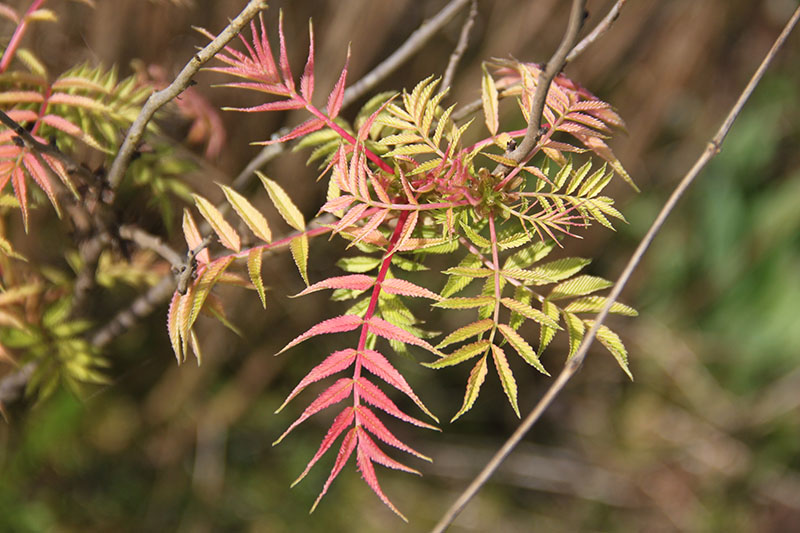

Give vegetation a minimal of an inch of water every week from the time they begin blooming in spring till the berries have completed and have every been harvested from the plant, eaten by wild birds, or fallen to the underside. Chances are high you will decide how tons water your vegetation are getting through utilizing a rain gauge.
Inside the event you uncover the perfect inch of soil is dry between waterings, enhance the quantity or frequency of your irrigation. By the use of the winter months, the plant will in all probability be dormant and solely occasional watering is required, to confirm the soil doesn’t dry out completely.
Whenever you’re rising in a container, aggressive growers like elderberries will want pruning to maintain them in a compact, bushy sort in order that they gained’t get too big for his or her containers. Pruning is significant, in every other case you’ll find yourself with an elderberry shrub that doesn’t fruit as vigorously on account of it used to, and it’ll shortly outgrow its container dwelling.
It is a job you’ll need to do in late winter or early spring earlier than new progress begins, beginning all through the third yr of progress.
Take away any canes that contact the underside and any which are damaged or broken. You may moreover skinny the bush out by eradicating any canes that cross each other, to spice up air circulation. Reduce canes on the underside close to the soil diploma.
Prune out any third-year canes, since they don’t produce together with youthful progress. Second-year canes produce greatest and manufacturing drops off after that. Identification is comparatively easy – third-year canes will in all probability be better than the encircling canes, and could have fewer leaves.
Depart a minimal of 5 canes in place on every bush so the plant can proceed rising.
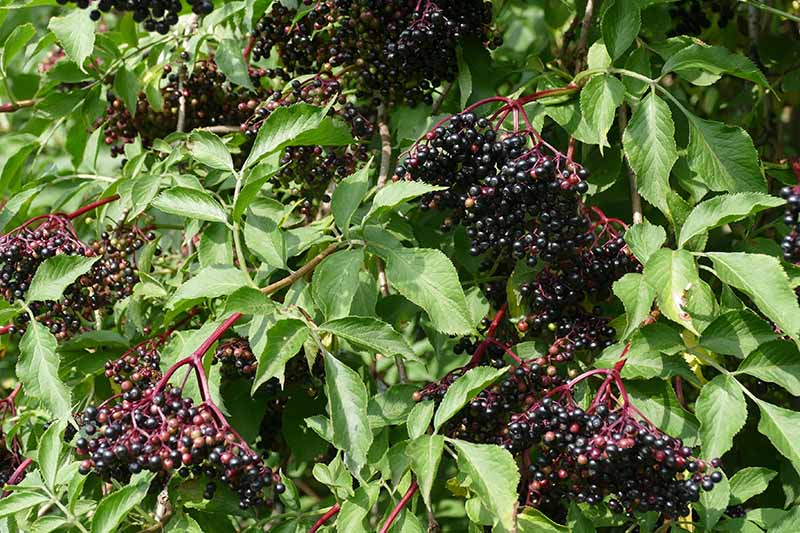

When you don’t have to divide elderberry vegetation, pluck out any suckers that pop up subsequent to the primary plant, in every other case you’ll find yourself with loads of vegetation attempting to compete for dietary nutritional vitamins and water in a single container.
From the second yr onward, fertilize in early spring with a balanced 10-10-10 (NPK) fertilizer in response to packet directions.
Frequent fertilization could also be essential for vegetation grown in containers, on account of the roots are unable to unfold earlier the container partitions looking out for dietary nutritional vitamins, and customary watering will flush them from the soil.
They’re nitrogen-hungry vegetation, so plan to reinforce the soil after loads of years of container rising. Inside the event you uncover your vegetation are producing an extra of newest leafy progress, cut back the quantity of nitrogen you’re giving them by half.
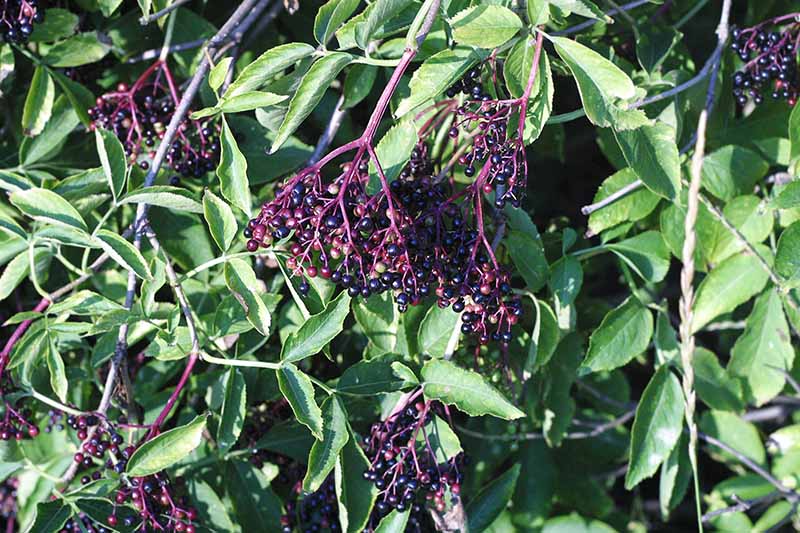

Nitrogen will promote the expansion of foliage nonetheless not of flowers or berries.
Chances are high you will enhance nitrogen by choosing a fertilizer with the following nitrogen ratio. Chances are high you will as correctly work composted manure into the soil.
If progress seems sluggish and just a few new canes pop up come spring, enhance nitrogen by half.
Look at further about among the best methods to fertilize your elderberry in our knowledge.
All through the winter, defend the roots from freezing temperatures by along with a two-inch layer of mulch to the perfect of the soil, and wrap the container in blankets or burlap. Many kinds of elderberries develop greatest in Zones 3-8, all of which expertise winter freezing.
Since container-grown plant roots are further uncovered to the local weather, they’ll use significantly additional safety.
Rising Ideas
- Plant in a container that’s a minimal of 24 inches huge by 20 inches deep
- Preserve soil moist nonetheless not waterlogged
- Present a full photograph voltaic to half photograph voltaic location – furthermore for people who develop S. canadensis, which prefers half to full shade
- Prune yearly to maintain dimension in test
Cultivars to Choose
There are 4 species of elderberry that you just simply’ll sometimes uncover in container gardens:
- S.nigra (Black)
- S. racemosa (Crimson )
- S. mexicana or S. nigra var. caerulea (Mexican or blue)
- S. canadensis (North American native)
Many elderberry varieties are self-fruiting, nonetheless will nearly all the time produce higher yields when a cultivar of the same species is planted inside 40-50 toes.
Others won’t set fruit in the slightest degree with out one totally different plant for cross-pollination.
To be taught further, do that roundup of our favourite elderberry varieties. Listed beneath are loads of cultivars acceptable for rising in containers:
Black Magnificence®
First launched to the US from Europe in 2004 by Confirmed Winners, ‘Black Magnificence®’ is a cultivar of S. nigra.
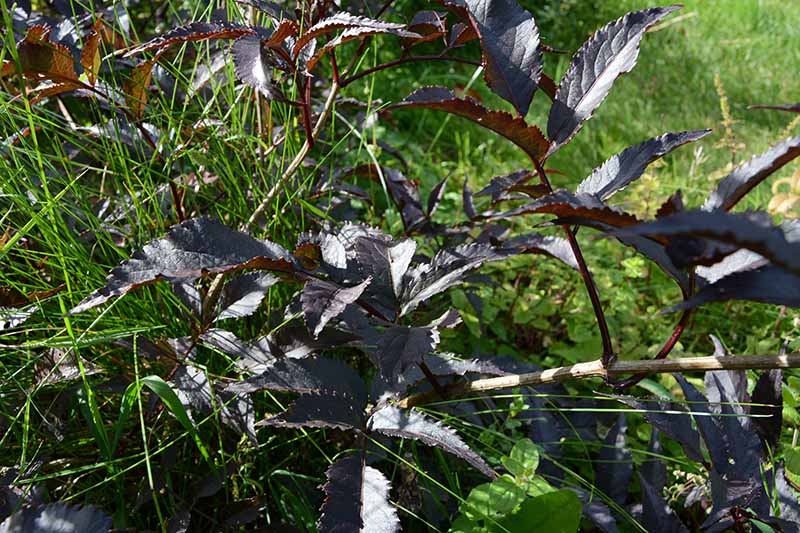

It has lance-shaped, darkish purple leaves and delicate pink blossoms with a candy, floral-lemony perfume.
Acceptable for Zones 4-7, it grows in a compact sort, with a mature excessive of six toes. Prune usually after the third yr to deal with a fast, bushy shrub.
All through the autumn, darkish berries seem – outfitted you’ve bought one totally different alternative, akin to ‘Black Lace®’ (described beneath) shut by.
You’ll uncover vegetation in quart-size pots at Nature Hills Nursery.
Black Lace®
S. nigra ‘Black Lace®’ is an exact magnificence, with delicate, darkish reddish-purple lacy leaves and light-weight pink blooms. This cultivar is suited to gardens in Zones 4-7, and makes an excellent cross-pollinating companion for ‘Black Magnificence®.’
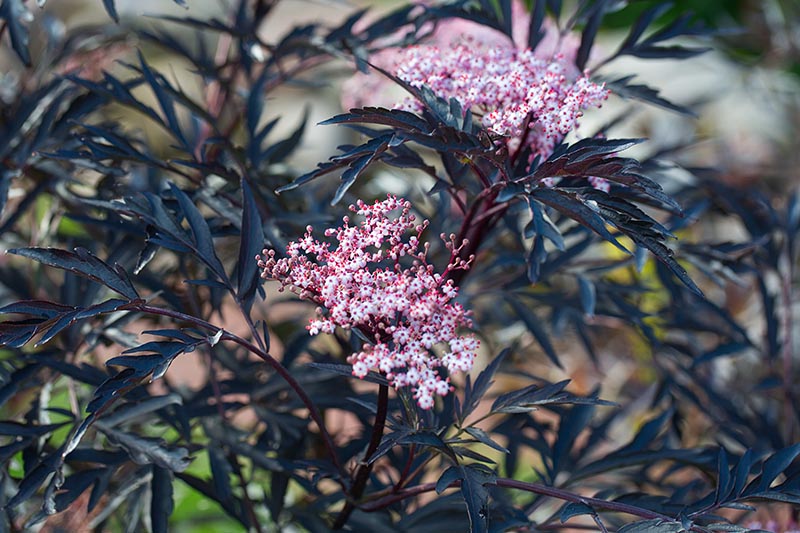

S. nigra is often typically generally known as the European elderberry. This categorical cultivar was developed in England all through the Nineteen Eighties, and was launched to the US market by Confirmed Winners.
If allowed to, it’ll prime out at 8 toes tall, nevertheless it responds appropriately to pruning do you have to need to keep a compact, bushy sort.
The darkish foliage, notably when contrasted with the fragile pink flowers in springtime, makes a daring assertion in your patio or as a function planting.
Shiny black berries will ripen all through the autumn, outfitted there’s one totally different alternative with an comparable bloom time and of the same species positioned shut by for cross-pollination.
You’ll uncover 18- to 24-month-old vegetation in 2- to 3-quart containers at Nature Hills Nursery or from Dwelling Depot.
Lemony Lace®
S. racemosa ‘Lemony Lace®’ is a compact, dwarf cultivar that has shiny yellow-green lacy foliage, and produces delicate white blooms in springtime.
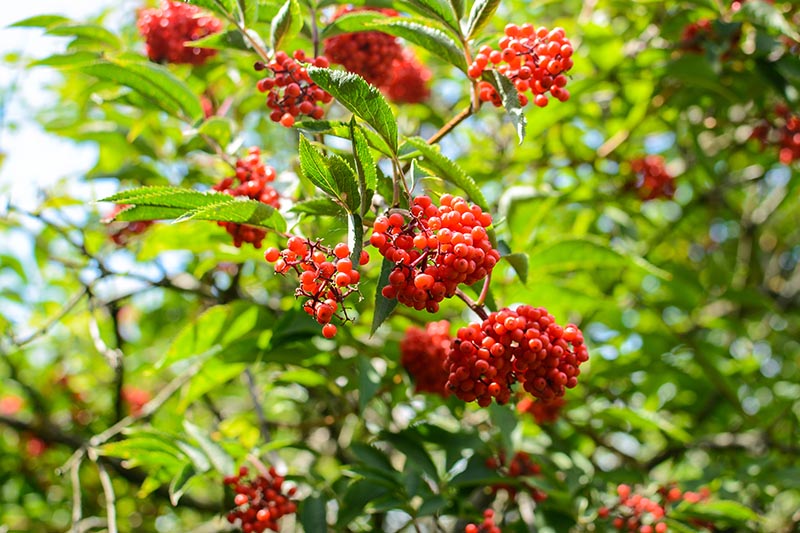

With its further upright progress habits, ‘Lemony Lace®’ is sweet for smaller areas, with a mature excessive of merely 3-4 toes tall.
The decorative purple berries will not be edible, nonetheless will present a present of autumn sustenance for native songbirds.
Acceptable for growers in Zones 3-7, you possibly can probably uncover 2- to 4-year-old vegetation in the marketplace at Nature Hills Nursery or from Dwelling Depot.
Tapiro
Tapiro is the frequent title of the Mexican species, S. mexicana. It’s native to western North America, from Oregon by the use of Mexico.
It has inexperienced foliage, and delicate yellow or cream-colored flowers give method to clusters of sunshine purple or blue berries all through the autumn.
As shortly as established, it’s drought tolerant. This makes it supreme for container rising, on account of it gained’t bear for people who neglect to water. It does, nevertheless, want safety from freezing temperatures beneath -5°F.
Tapiro grows appropriately in Zones 6-10 and reaches a mature dimension of solely 4 toes tall and 4 toes huge – good for a container.
Dwarf Elderberry
Dwarf elderberry, S. ebulus, moreover known as dwarf elder, danewort, dane weed, and dane blood, is native to southern and central Europe and has naturalized all through the jap US.
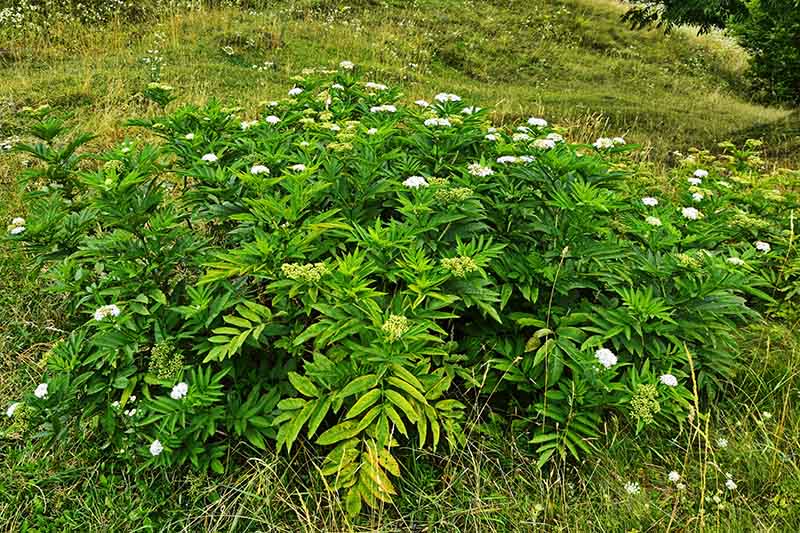

It grows shortly to a mature dimension of three toes tall and huge. It’s acceptable for growers in Zones 4-8, and selections fairly white flowers with crimson edges all through the spring.
This self-fertile species produces massive clusters of reddish-purple fruit that ripens in early fall.
Managing Pests and Illness
Elderberries face loads of pests and sicknesses all through the yard, although vegetation are often untroubled.
One of the best strategy to stop your container-grown vegetation from contracting illness is to start out with healthful transplants. Defend good airflow by pruning usually, and supply ample water and well-draining soil.
Pests
Most pests will give your elderberry vegetation an enormous berth, nonetheless keep a watch fixed out for these:
Elder Shoot Borer
The elder shoot borer is the larvae of a red-brown moth, Achatodes zeae, that tunnels into the mannequin new shoots, and causes the data of the canes to wilt.
The moth lays its eggs in late summer time season, they usually hatch the following spring. You’ll know you doubtless have an infestation if merely the inexperienced shoots in your plant begin to wilt.
To eradicate this pest, prune as soon as extra canes till they’re not hole, and burn or cast off the contaminated provides.
Thrips
Thrips are tiny winged bugs which are black or brown with purple, black, or white markings.
They puncture vegetation and suck the juice from petals and fruits. This causes stunted progress, decreased harvests, and curling and discolored leaves.
Use an insecticidal cleaning cleansing cleaning soap to deal with thrips.
Be taught further about thrip administration correct proper right here.
Illness
Beginning with high-quality potting soil means you’ll often be succesful to keep away from the soil-borne sicknesses which is able to have an effect on this plant. Factors typically come up in vegetation that aren’t pruned usually ample to deal with acceptable airflow.
Leaf Spot
Inside the event you uncover black or brown spots on the undersides of leaves, your plant may have leaf spot. It might very nicely be launched on by quite a few micro organism and fungi, together with Colletotrichum spp., Septoria sambucina, and Phyllosticta sambuci.
Left unchecked, it’d in all probability set off leaves to point yellow and fall off the plant. Fruit could develop spots and type cracks.
Whereas it gained’t often kill your vegetation, it’d in all probability weaken them and cut back flowering and fruit manufacturing.
Chances are high you will address this drawback with a sulfur or copper-based fungicide, which is able to gradual the unfold, nonetheless not remedy the illness.
Powdery Mildew
This illness impacts a complete vary of vegetation, together with elderberries. You’ll uncover whitish-gray powdery mildew on leaves, buds, and twigs. It might in all probability set off stunted progress, and often seems in moist, humid circumstances.
It’s essential to deal with good air circulation by pruning, keep away from watering the foliage, and take away any particles that falls into the container. Chances are high you will as correctly spray vegetation with a focused fungicide.
Be taught further about treating powdery mildew correct proper right here.
Root Rot
Though they like moist soil, if their roots develop to be waterlogged, elderberries could bear from root rot. That is significantly true for vegetation grown in container. That’s why it’s essential to produce good drainage, with a substantial amount of drainage holes in your container.
Root rot is launched on by Phytophthora rubi, a fungus-like organism that thrives in waterlogged soils.
Take a look at drainage infrequently by watering your container and watching to see if further water drains out of the underside. If it doesn’t, the soil may have develop to be compacted. You’ll need to take away the plant and launch the drainage holes.
Refill the container with new, well-draining potting soil and replant.
Root rot causes leaves to point yellow or purple, and roots may have black or brown lesions. In case your plant has root rot, it’s toast. Pull it and begin as quickly as further.
Thread Blight
Thread blight is launched on by a fungus, Corticium stevensii. Leaves wilt, curl, and swap brown, significantly on components of the plant positioned in full shade. You’ll furthermore see a white fiber that varieties close to ineffective components.
Prune vegetation usually, and assure they’ve a substantial amount of air circulation by retaining them spaced away from partitions or completely totally different vegetation by a minimal of three toes. Chances are high you will address this illness with a fungicide.
Pots of Berry Bliss
With the fragile fantastic factor concerning the intensely-scented flowers that look heavenly in bouquets, and the fruit that could be utilized medicinally or in cooking, elderberries are a delight to have all through the yard.
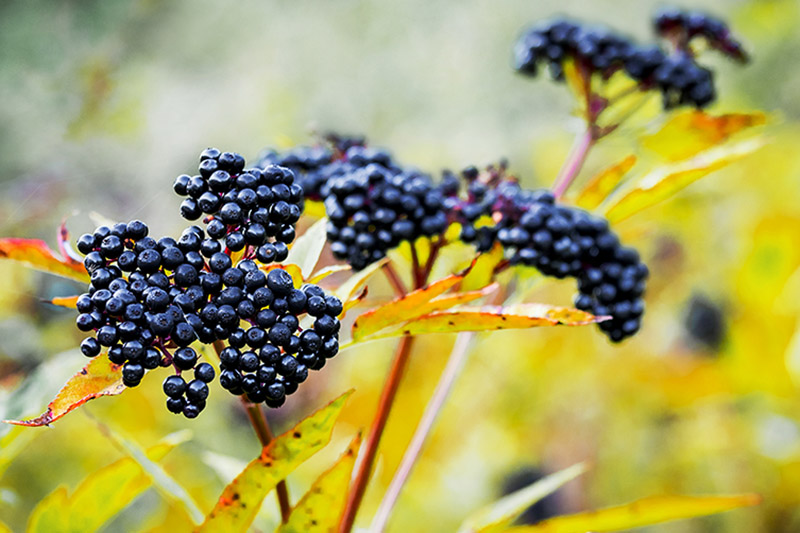

Inside the event you don’t have room in your yard beds, don’t despair. These may be grown in a container the place you would possibly have the benefit of all that the plant has to offer in your porch, patio, and even on a sunny balcony.
Have you ever ever ever tried rising elderberries in containers? Are you tempted to intention? Inform us all through the options beneath, and be utterly glad in order so as to add an image or two!
For added particulars about rising and utilizing elderberries, you’ll want these guides subsequent:

